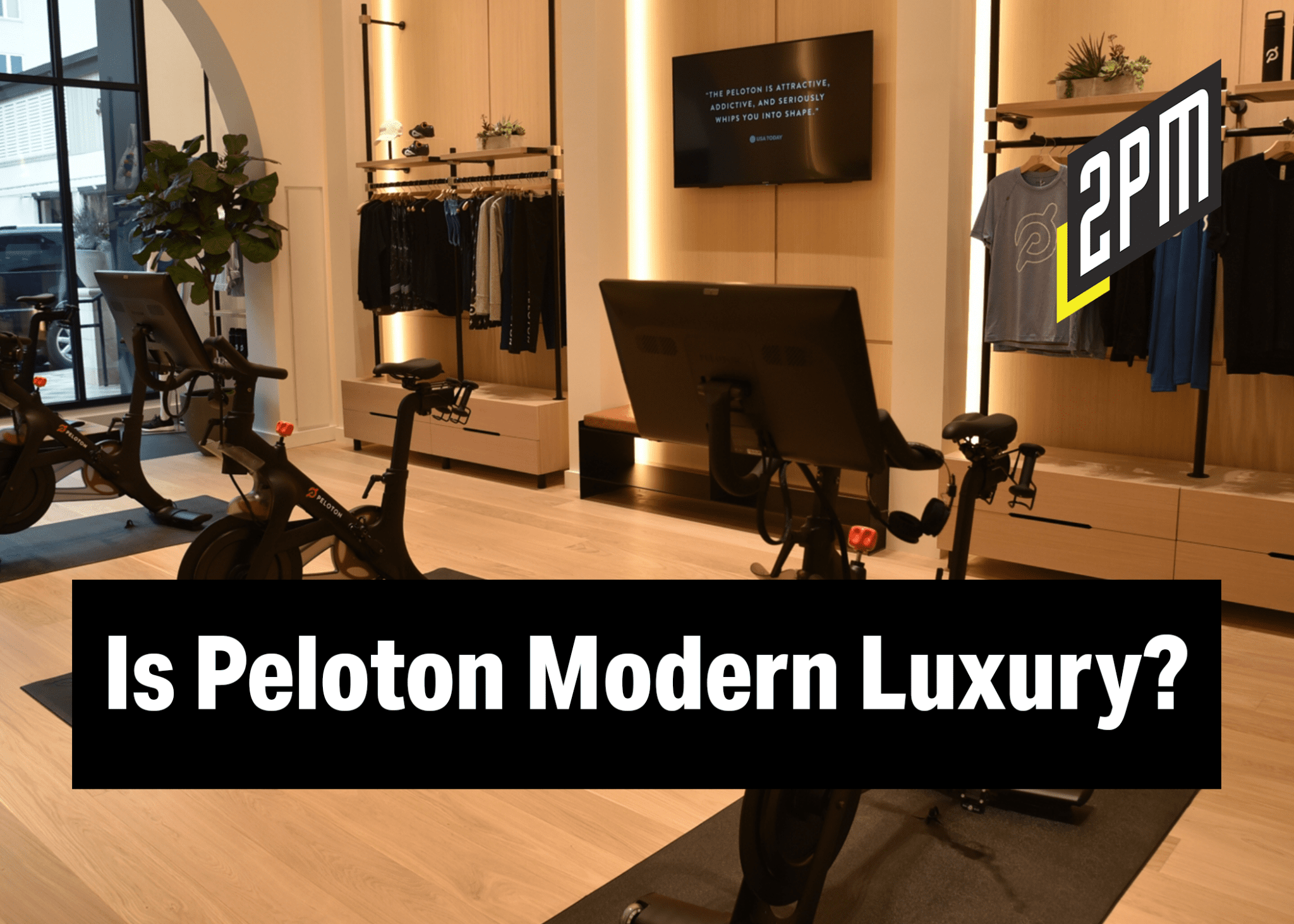
Om Malik and Lean Luxe‘s Paul Munford had a thought-provoking exchange. Does the modern luxury go-to Lean Luxe (and the industry as a whole) have a grasp on what luxury means in online retail? On its face, a physical product that makes itself available to the masses cannot be a luxury product.
Lean Luxe on Twitter
@om Sure, by the old definition of luxury – you’re correct. But don’t judge modern luxury brands’ bonafides using the old set of luxury rulebooks. More here: https://t.co/ZLjoBdxYUz and here: https://t.co/uHYOPzsI9n
There are very few products, if any, that digitally vertical native brands (DNVB) sell that would qualify as traditional luxury goods. Here is Munford’s definition:
The key strength of a modern luxury brand is its emphasis on the entire package, rather just the product (or logo) itself. It’s a different mode of operation that takes some getting used to, but it disperses with the conventions of the old, blingy version of luxury, and is best optimized for today’s new consumer behaviors and expectations.
The fact of the matter is that competing on product quality alone leaves a brand open to exposure. MLCs have smartly understood that a better overall package or bundle — in an open market like today’s — can be far more compelling to shoppers than just product alone can.
Munford makes an important point that I’d like to take a bit further. Lean Luxe tends to maintain a narrow focus on hard goods and the packaging that they arrive in. But what about the purchase process and the attentiveness to customer happiness? And what about time?
The definition of luxury: an inessential, desirable item that is expensive or difficult to obtain.
Luxury, however you define it, is a brand’s embodiment of characteristics that make it desirable. Historically, those characteristics have been more ‘What’ features like quality, exclusivity, and cost. You can still define luxury as characteristics that make a brand desirable, but those characteristics have shifted. Quality is table stakes.
Las características que hacen que las marcas sean más deseables son características del "cómo", como una excelente experiencia del cliente (cómo experimento la marca), una misión de marca significativa (cómo devuelven/marcan la diferencia) y el compromiso con la comunidad. ¿Es una marca creada por un artista y excesivamente cara? Tal vez no. Pero si se trata de un producto, o incluso de una experiencia completa que es muy deseable, puede considerarse una marca de lujo. Resulta que las DNVB poseen una gran infraestructura para apoyar las características que definen el lujo moderno.
Luxury is always relative; it is loosely defined to meet the times and the market. If you walk through a great mall in the United States, you will visit brand experiences that will provide a luxurious taste. Take Ohio’s Easton Town Center as an example. The indoor / outdoor mall features Burberry, Tiffany and Co., and Louis Vuitton. However, your perception of luxury changes when you walk through the Bal Harbour Shops in North Miami Beach. Bal Harbour is considered the finest mall in America. Both malls are considered “luxury” malls but neither are as luxurious as Dubai’s mall.
But can a DNVB be a luxury brand?
The notion of luxury is often applied to tech fashion brands. I partially agree with Om Malik’s statement here.
[Lean Luxe] is again confusing smoke / mirrors marketing and what is really luxury. All I know is that AllBirds and Brandless and Casper are not luxury, And no amount of your linguistic gymnastics will convince me of what is luxury, FWIW, LV is not luxury either. Too common.
AllBirds, Brandless, and Casper do not make luxury products but Munford isn’t suggesting that their products-alone are what classifies them within the modern luxury space.
Louis Vuitton was first hired as a personal box maker and packaging expert for the Empress of France. He was charged with “packing the most beautiful clothes in an exquisite way.” It was the practice that helped him to gain influence among the elite and royals, catapulting Louis Vuitton’s namesake to luxury status.
Louis Vuitton began with an early product and the two advantages commonly seen in the DNVB space:
- Packaging
- Maniacal focus on customers
The definition of a DNVB: a brand born online with a “maniacal” focus on the customer experience. A DNVB may start online but it often extends to a brick-and-mortar manifestation. Digitally native vertical brands control their own distribution.
Luxury brands don’t always begin as purveyors of luxury products. And due to a macroeconomic consumer shift from materialism to investing in luxury experiences, there are a large number of consumers who prefer DNVB’s luxury-experience over traditional luxury products. For many in the business and wealth classes, it’s a symbol that their money is better spent on even finer things than goods. The definition of luxury is changing.
Here are two relevant passages from 1994’s The Idea of Luxury:
Page 18
Page 35
Comprar experiencias en lugar de comprar bienes de consumo es una tendencia que está adoptando el conjunto del lujo. La interpretación de la palabra lujo significa algo totalmente diferente para los tipos de clientes que tienen los medios y la conciencia de comprar con marcas de la DNVB. El último estudio de Skift muestra un claro cambio en la demanda de experiencias de viaje más transformadoras entre los viajeros de alto nivel(Skift / 2 de mayo de 2017). Mientras que los productos caros solían ser el deseo del consumidor: los productos, la comunidad y el servicio desempeñan ahora el papel de permitir la economía de la experiencia.
Many DNVB products (see the database here) are marketed to enable this type of consumer: Mizzen+Main (No. 86) is for the traveling business class male. Ministry (No. 91) is for the well-educated, urban millennial. AllBirds (No. 56) is worn by the business casual, aspiring member of the investor-class. Rogue (No. 8) turned a garage into a coveted space in a home.
Digitally vertical native brands are founded with these basic questions:
(1) How do we make a great product?
(2) How do we build a community around it?
(3) How do we provide an elegant solution for commerce?
(4) How do we enable customers to save time and focus on what matters?
“One fundamental trap that people run into when assessing the merits of a modern luxury brand is the tendency to judge that brand using the ‘best-in-class’ framework,” says Lean Luxe’s Paul Munford. Lean Luxe’s definition is mostly right. Munford discusses packaging as part of the bundle: “[These brands] offer a better bundle to offset [traditional definitions of luxury] — more convenience, transparency, connection, better messaging, pricing, etc.”
But a selection of modern luxury brands are also marketing time as part of the proverbial “bundle” and that’s the only place where Munford and my thoughts differ.
It’s no longer sufficient to define luxury products by how difficult they are to attain. Time is the scarcest resource and the ultimate luxury. Being a modern luxury brand is about being self-aware. These brands sell time as a scarcity and then build products around it.
There may be no greater example of the community / product / service paradigm than Peloton, a DNVB that Malik’s True Ventures joined back in 2015.
Peloton is now shifting gears with a new financing program ($97 per month for 39 months for both the bike and subscription service), an ad campaign that’s more relatable to a diverse consumer base and an NBC Olympics sponsorship. Peloton counts NBCUniversal among its investors, and has raised nearly $450 million in total funding to date.
“We had this idea of a very affluent rider who many of our early adopters were,” she said. “We realized, through conversations with our community, that there was a huge opportunity with people who thought $2,000 was a huge investment but were [buying] it over and over again because the product is so important to them.”
How Peloton is Marketing Beyond the Rich
Peloton no es un producto de lujo tradicional, pero comparte consumidores con las marcas de lujo tradicionales. Piensa en el tipo de vivienda necesaria para albergar una bicicleta con Wi-Fi o una cinta de correr de RV de 4.000 dólares. Es una pieza brillante que combina la comunidad con el producto y el servicio. La propuesta de la marca afirma explícitamente que el propósito es liberar al propietario para que se centre más en las experiencias.
Peloton’s value proposition is as much about what you can accomplish away from the treadmill. Why take the time to travel to a gym? That time could be better spent elsewhere. This is the mark of a modern luxury brand.
Lea más sobre el tema aquí.
By Web Smith and Meghan Terwilliger | About 2PM
